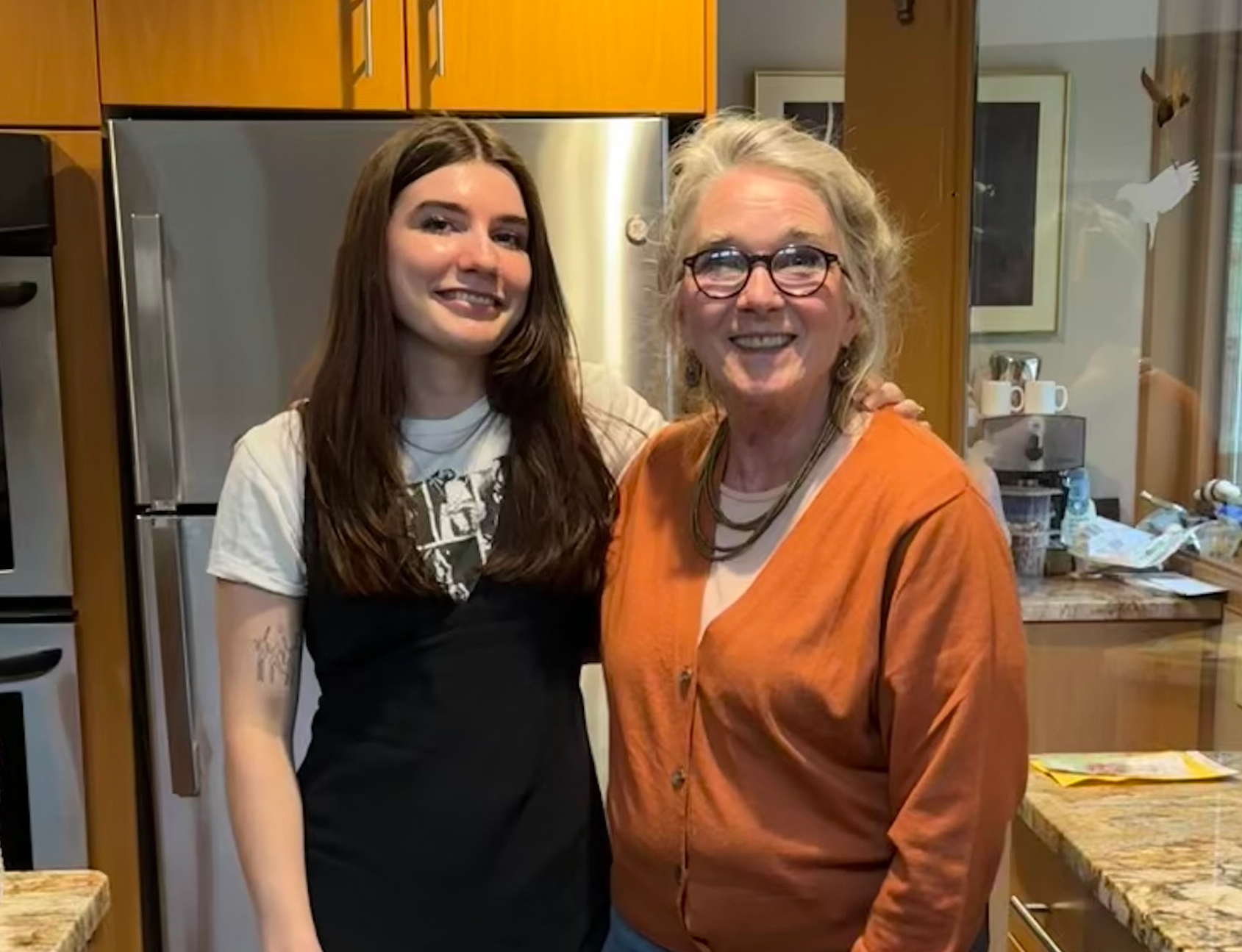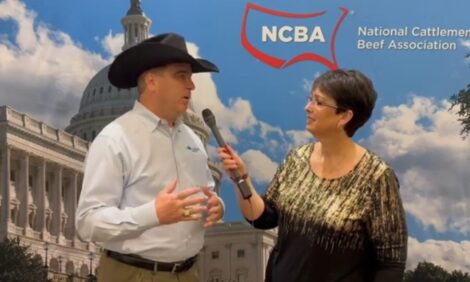



A fight for life against bovine tuberculosis
Bovine TB is a community disease that is sustained in a community of deerFrequently, stories of bovine TB revolve around deer or cattle that focus on the impact to family businesses and pursuits of happiness. But the untold story is what happens when a person becomes infected. This is part of Adriana Jarrett’s story.
Adriana Jarrett’s story with bovine tuberculosis (bovine TB) began so innocently, even compassionately, but approximately 10 years later, bovine TB almost took her life. When Adriana was 9 years old, she, along with other children, helped to feed a sick deer that a neighbor in Alcona County had been helping. It was fun to feed the deer, and they felt they were doing it a favor. However, it is likely that this deer transmitted the bacteria for bovine TB to at least one of its caretakers: Adriana.

When she was 19, Adriana applied for a job and had a routine screening TB skin test. It came back positive. It was June of 2020 and Covid was raging, so Adriana’s doctors didn’t think much about TB, telling her the TB test was likely a false positive. In reality, Adriana did have a TB infection that was beginning to make an impact after slowly multiplying in her body for years.
Adriana is not the only person in Michigan to contract TB, even bovine TB. Between 2002 and 2017, three deer hunters in Michigan were diagnosed with bovine TB. From 2019 to 2022, an additional four people were diagnosed, and most had some type of contact with free-ranging white-tailed deer. Of those who contracted bovine TB, two had severe pulmonary disease. Adriana was one of those two.
In September 2020, Adriana went to urgent care with chest pain and constant shortness of breath. Whatever her problem, it was affecting her daily life. She tested negative for Covid, but chest x-ray showed a pneumothorax — a collapsed lung. A pneumothorax can occur from trauma, which was not the case with Adriana, or from underlying lung disease.
All along, Adriana reminded the medical professionals that she had had a positive skin test for TB, but still no one took her seriously. She underwent a CT-scan and a bronchoscopy that took two hours. She was being tested for anything and everything. One doctor even told her “You might have cancer.”
A culture of Adriana’s sputum confirmed what she had long suspected; she had TB. Her immediate reaction was guilt as she thought of people who she may have exposed: her younger sister, aunt, grandmother and others. The reality that Adriana was beginning to come to grips with is that TB is a community disease. It doesn’t affect one person in isolation, it affects many.
“We see these statistics of a few people in Michigan with bovine TB in recent years and think it's not a big deal, because what's a few people in the grand scheme of things,” Adriana said.
Bovine TB is a community disease in a variety of ways. The disease is sustained in a community of deer. Transmission of the disease can be increased in a community of deer because of elevated deer densities and feeding of deer. The disease affects a community of farmers because it can be transmitted from deer to cattle. It takes a community to control the disease. The impacts of controlling the disease through reduced deer population affects a community and if a person becomes infected, as Adriana did, it affects the community around that individual. Transmission of bovine TB to a close friend happened in Adriana’s case, as it did for another severe pulmonary patient.
“TB is unique in that while each of us are undergoing treatment, being isolated from the world, our entire support system now also has to be tested,” Adriana said. “While I was experiencing the worst physical symptoms of my life, my little sister held her breath, hoping I would keep mine, hoping I would wake up each day, and wondering if she soon would be going through the exact same thing. And we can't know right away, we have to wait eight painfully long weeks to find out if she'd be okay or not. I held my guilt tightly in those eight weeks, not only for my sister, but for every person I cared about that had been around me. I am one person who had TB, one person represented in my case with 17 contacts. Those 17 people who I so deeply care about watching me die and wondering if they're next. Statistics show how many people get TB, not how many people are impacted by TB.”
Years ago, bovine TB was common in Michigan’s cattle herds until the state began sacrificing test-positive animals. In 1979 bovine TB was declared eradicated from Michigan’s farms and routine TB testing of cattle herds was largely stopped. However, in 1994, one deer was detected as infected with bovine TB. The deer likely picked it up from cattle that were carrying bovine TB but were never tested after 1979.
Since 1995, when surveillance of deer began, the Michigan DNR has been testing deer for bovine TB from many sources, including head submission by hunters and deer shot by farmers and USDA-WS under DNR-issued permits. To date, more than 1,000 bovine TB-positive deer have been found. Likewise, 82 Michigan beef and dairy herds and eight cattle feedlots have had cattle diagnosed with bovine TB. Many of those herds are no longer in business due to the long and costly requirements farmers must meet after having an animal test positive.
Bovine TB affects communities. It affects cattle producers. It affects hunters. But when TB affects people personally, it is a story that needs to be told, for eradicating TB takes a community as well.
Adriana was put on a long-term course of four antibiotics. The impacts on her body were harsh. She developed drug-induced hepatitis from the antibiotics. She lost so much weight that she looked like a skeleton. Adriana thought she was going to die and was terrified that her younger sister might find her dead. She was in isolation for 10 weeks and experienced tremendous loneliness. The mental health effects were brutal and long-term.
Set-backs plagued Adriana. Coming out of 10 weeks in isolation she started to develop a wheeze again and increasing symptoms. A few months later she again had a collapsed lung and then was diagnosed with aspergillus (a fungal disease) on top of the bovine TB. She felt her life was revolving around pills and defined by diseases. She was often nauseous and was physically and emotionally spent. Adriana felt like giving up.
“When I got diagnosed with TB, I became very sick, very fast,” Adriana said. “My entire identity now revolved around the current state of my illness. I was a college student, a sister, a daughter, a best friend, a girl about to enter her 20’s, a girl who loved to go outside, a girl who liked to sit at cafes. All these pieces of my identity were being stolen from me by TB, and it didn’t help that many of my doctors made me feel like I was just a pair of sick lungs.

Over and over, she was encouraged by Janice Taylor, a compassionate nurse. As treatment was extended, again, Adriana needed Janice’s encouragement to go on. Relapse, start over, keep going; the stress was almost too much.
“My nurse saw me as a whole person,” Adriana said. “She showed interest in who I was, asking me questions about myself out of genuine curiosity. As I was losing my identities, she was picking them up and putting them somewhere safe, so I had something to go back to. Her compassion and ability to make me feel heard was a large part of why I never gave up.”
Finally, in September 2021 Adriana completed treatment. That was cause for celebration – she thought. Completing her long treatment certainly would mean that she would be free of symptoms, wouldn’t it? Sadly, Adriana still gets wheezes, coughs and shortness of breath if she exerts herself too much. TB has left lasting damage in her lungs. But Adriana is now officially free of TB.
Northeast Michigan is not free of bovine TB. The deer are not free of bovine TB. The risk of transmission to cattle is still alive. The risk of transmission to people is still alive. Bovine TB will be a threat until the region’s deer herd is disease-free. That takes a community working together.
When Adriana was asked what she would say about feeding wild deer, she said, “Don’t do it! Wild animals can carry diseases. It’s not worth it!”
This story of TB is tragic. Adriana was robbed of health, freedom, education and joy. Bovine TB continues to steal from her in the form of ongoing health concerns. She has found support in a national group called “We are TB” and met others that have fought the bitter fight against TB. Unfortunately, Adriana’s will not be the last story of a life impacted by TB, nor the last bitter fight as long as TB remains.
Every year, on March 24 the world recognizes World TB Day, the anniversary of the day in 1882 when Dr. Robert Koch announced the discovery of Mycobacterium tuberculosis, the cause of tuberculosis. Michigan Department of Health and Human Services, has an active tuberculosis program (MDHHS TB), and there is a national Stop TB USA program. These are important, but not more important than what communities in Michigan, especially in northeast Lower Michigan, can do when they join together to combat the conditions that lead to greater spread of bovine TB among deer, to cattle and even to people.
Michigan State University is a leader in this battle with bovine TB in Michigan. Learn more at https://www.canr.msu.edu/outreach/index and search for TB. If you, or someone you know, has potentially been exposed to a deer that when field-dressed appeared to have lesions, have been notified that a deer head submitted was positive for TB or a farmer who has had cattle diagnosed with bovine TB, then you are encouraged to get tested for TB at your local health department or by your medical professional. While TB is not a simple cure, it is always better to detect it sooner than later.
This article was published by Michigan State University Extension. World Tuberculosis Day is observed on March 24 and is designed to increase public knowledge of the threat of tuberculosis around the world.


